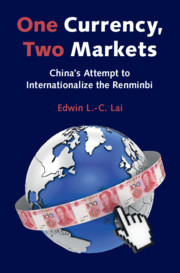Book contents
- One Currency, Two Markets
- One Currency, Two Markets
- Copyright page
- Dedication
- Contents
- Figures
- Tables
- Boxes
- Preface
- Acknowledgments
- A Short Summary of This Book
- Abbreviations
- 1 Introduction
- 2 China’s Aversion to a Floating Exchange Rate
- 3 Why Does China Want to Internationalize the RMB?
- 4 China’s Strategy of Internationalizing the RMB
- 5 The Importance of Capital Account Liberalization
- 6 The Importance of Financial Sector Reform
- 7 The Importance of the Offshore RMB Market
- 8 The Potential of the RMB as a Payment Currency
- 9 The Prospects of RMB Internationalization
- References
- Further Reading
- Index
2 - China’s Aversion to a Floating Exchange Rate
Published online by Cambridge University Press: 17 June 2021
- One Currency, Two Markets
- One Currency, Two Markets
- Copyright page
- Dedication
- Contents
- Figures
- Tables
- Boxes
- Preface
- Acknowledgments
- A Short Summary of This Book
- Abbreviations
- 1 Introduction
- 2 China’s Aversion to a Floating Exchange Rate
- 3 Why Does China Want to Internationalize the RMB?
- 4 China’s Strategy of Internationalizing the RMB
- 5 The Importance of Capital Account Liberalization
- 6 The Importance of Financial Sector Reform
- 7 The Importance of the Offshore RMB Market
- 8 The Potential of the RMB as a Payment Currency
- 9 The Prospects of RMB Internationalization
- References
- Further Reading
- Index
Summary
In Chapter 2, I explain why China desires a stable exchange rate. International trade has been very important to China’s economic development ever since reform and opening started in 1978. China had a huge rural labor surplus (underemployed rural labor force) that had to be absorbed by the economy. Thus, it needed to keep its labor employed by expanding external demand through exporting. In order to sustain export-promotion, during 1996-2005, China had been maintaining a stable and under-valued exchange rate versus the USD. As a result of this exchange rate policy, China rapidly became an important player in international trade. A stable and undervalued exchange rate with the USD has therefore become the cornerstone of China’s initial development strategy. Besides, China has a fear of floating its exchange rate, because of historical experiences, such as the Plaza Accord and the Asian Financial Crisis. In fact, results of academic studies are ambiguous about whether exchange rate management is economically inefficient. The stable exchange rate policy, however, becomes an obstacle in RMB internationalization, which requires that China allows much freer capital mobility. The two cannot be achieved at the same time if autonomy in monetary policy is to be maintained, according to the open-economy trilemma.
- Type
- Chapter
- Information
- One Currency, Two MarketsChina's Attempt to Internationalize the Renminbi, pp. 22 - 36Publisher: Cambridge University PressPrint publication year: 2021



